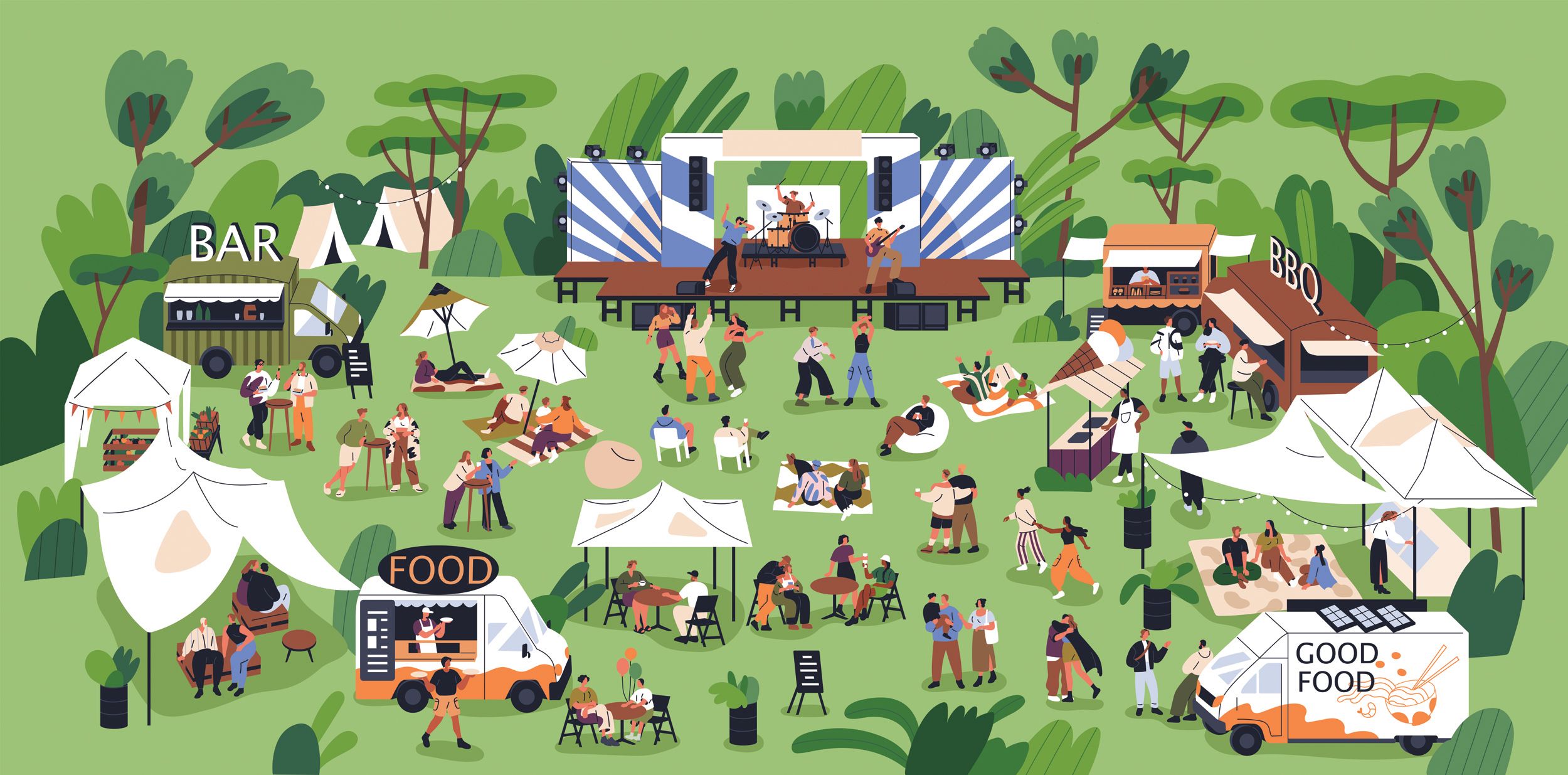Sounds Delicious!
Eating is a multisensory experience. Taste and smell are the key players, directly linked to the food itself. Sight plays a role, influencing our expectation of what food will taste like and contributing to its overall desirability through visual appeal, but what about sound? The satisfaction of biting into a crunchy potato chip or tapping through the crust of a crème brûlée with a spoon are definitely feel-good sound moments in the process of eating, but what if we zoom out from the level of the plate to the surroundings? How does the sound around us—and music in particular—influence our experience of food?
Music, along with decor and lighting, can set the mood in a restaurant (or at home, if you choose), with unlimited variables creating different vibes. Music has the power to elevate any dining experience, transforming a simple meal into a sensory journey that engages all our senses. The right soundtrack, when paired with the right food and environment, can turn an otherwise ordinary meal into a memorable one.
Congruence is also a factor. Ethnic food matched with music from the same region provides an additional sensory element to enhance the overall experience. Listen to Mambo Italiano and it will be pasta, not sushi, you’re in the mood for. Conservative and traditional environments paired with classical music make sense, but would be boring in a restaurant with a trendier feel. That said, sometimes a contrast between food and music styles can work well—it’s all about getting the details right: volume, beat, ambiance and audience.
Psychologists and marketers have been experimenting with different sensory factors in restaurants and shops for decades, analyzing consumer behaviour and making suggestions for desired outcomes. Music is a critical component to influencing behaviour as it evokes emotions. Savvy restaurateurs also use music as a means of creating a desirable environment for their patrons. So let’s look at what the research shows about the connection between music and food.
Food choices
Our emotions and subsequent desires and eating habits can be influenced by the mood-setting properties of music. A fast beat elicits excitement, whereas slow and calm music helps us to relax. These different states of mind can impact our food choices. Studies such as one published in the Journal of the Academy of Marketing Sciences found that higher volume ambient music (and loud environments in general) increase heart rate, arousal and stress, inspiring diners to make less healthy choices and indulge in greasy fast food. In contrast, softer music and quieter environments have a calming effect, making us more mindful of what we order and more likely to choose healthier fare like salads. This provides us with valuable insight into our decision making process: are we choosing the cheeseburger because we’re hungry and crave the taste, or is the auditory environment causing us stress that we want to soothe or distract ourselves from?
Amount of food consumed
Another study published in the scientific journal Appetite found that playing soft, slow-tempo music during a meal led to a decrease in the amount of food consumed, as well as an increase in the perceived enjoyment of the food. According to the researchers, the calming effect of the music may have helped the test subjects be more mindful of their eating and take more time to detect the flavours of the food. Eating slowly also allows time for signals from our brain to tell us that we’re full before we overeat.
Speed of eating
As per a study conducted at Johns Hopkins University, music has the potential to impact our eating pace as well. The study observed that individuals listening to slow music consumed three bites of food in a minute, while those who were exposed to fast-paced beats finished five bites in the same duration.
Music and digestion
Slower rhythms in music have the potential to lower our heart rate, induce relaxation in our muscles (including the stomach) and consequently enhance our digestive process. Conversely, music that doesn't appeal to us, has a very fast beat or is played too loudly, may increase blood pressure and cause muscle constriction, thereby impeding digestion. Specific songs can even trigger memories (good or bad) which may have a subtle impact on whether we remain calm or become agitated, which will impact digestion positively or negatively.
Taking it to the next level
Let’s say you want to experiment with the interplay between food and music to fully explore the possibilities. You can take inspiration from Unusual Ingredients (unusualingredients.co), a multisensory experience exploring the relationship between sound and flavour. Two musicians and a food anthropologist have created a unique offering whereby you purchase a packet of food containing such diverse items as popping candy, crispy seaweed, and honey lozenges, which you consume while listening to customized auditory frequencies and music that has been carefully calibrated to enhance the sensory entanglement of music and food. While you taste honey, you’ll hear bees; while fizzy candy pops in your mouth, you’ll hear effervescent soundscapes. Experimental and extreme, perhaps, but it does show you just how far it’s possible to play with this dynamic.
Practical applications
Now that we know how music can affect our food choices, amount of food consumed, speed of eating and overall enjoyment of food, we can use this knowledge to our advantage, fine tuning our selection of musical accompaniment to our meals at home and being aware of the external influences of music in restaurants, overriding the subconscious suggestibility with our own more mindful decision making. Paying attention to all of our senses when we eat can help us savour every bite and even improve our digestion.
Sounds good to me.





